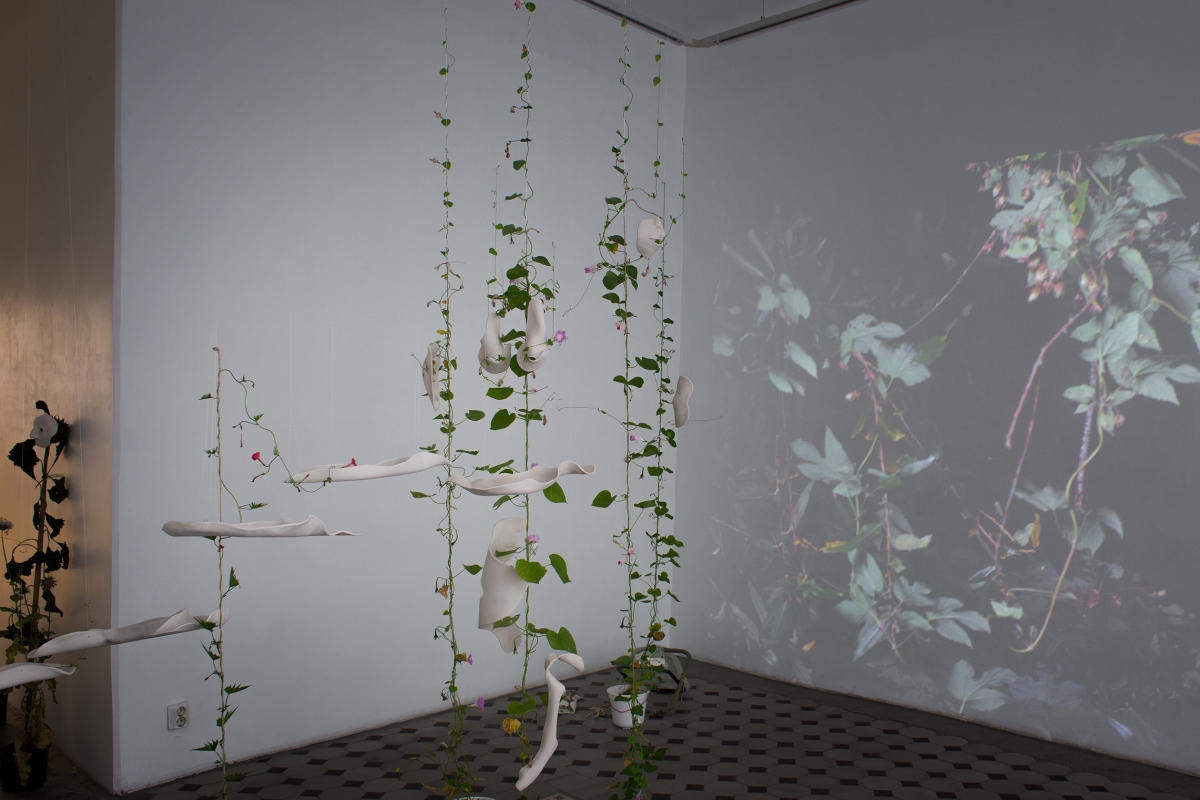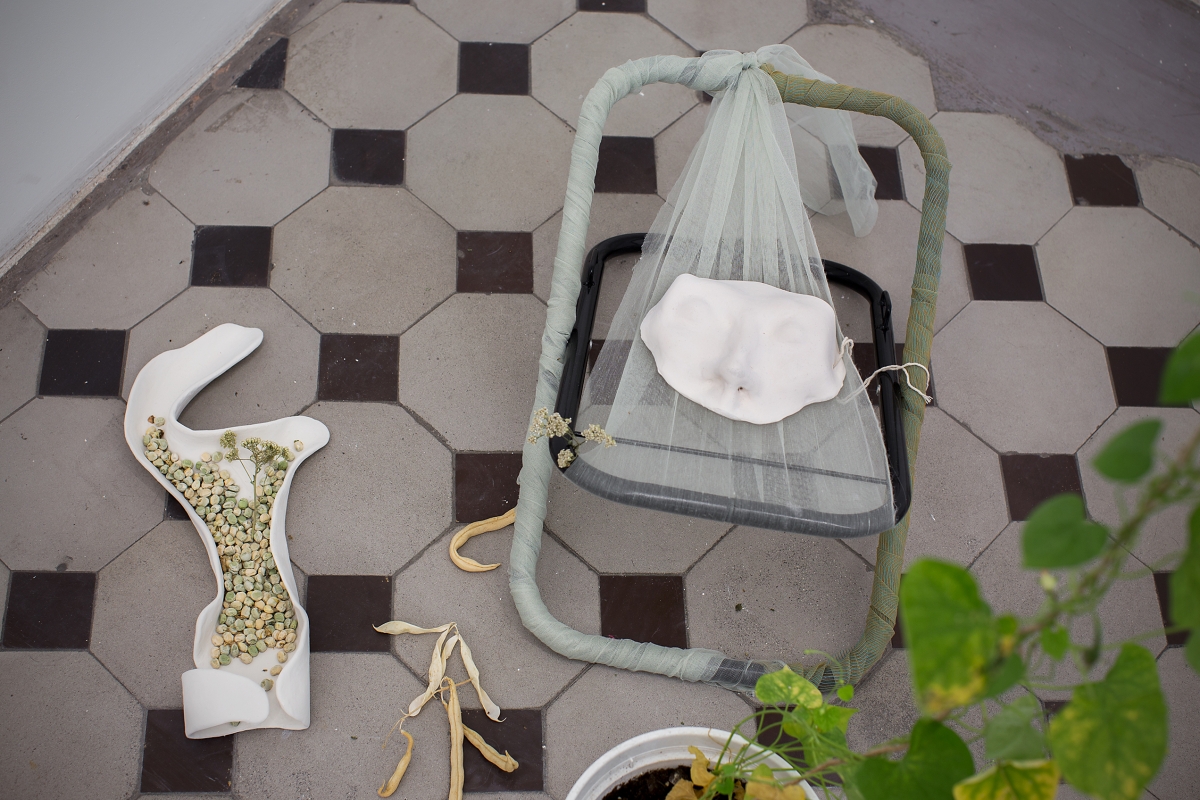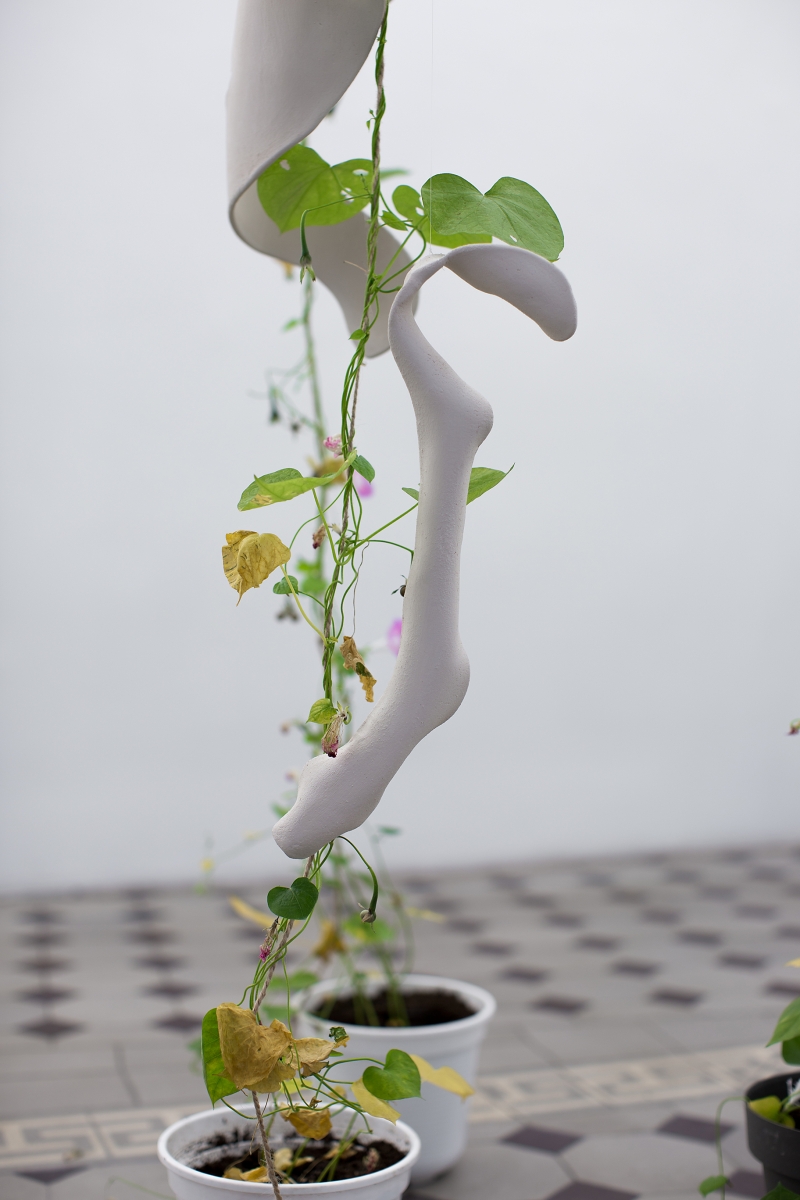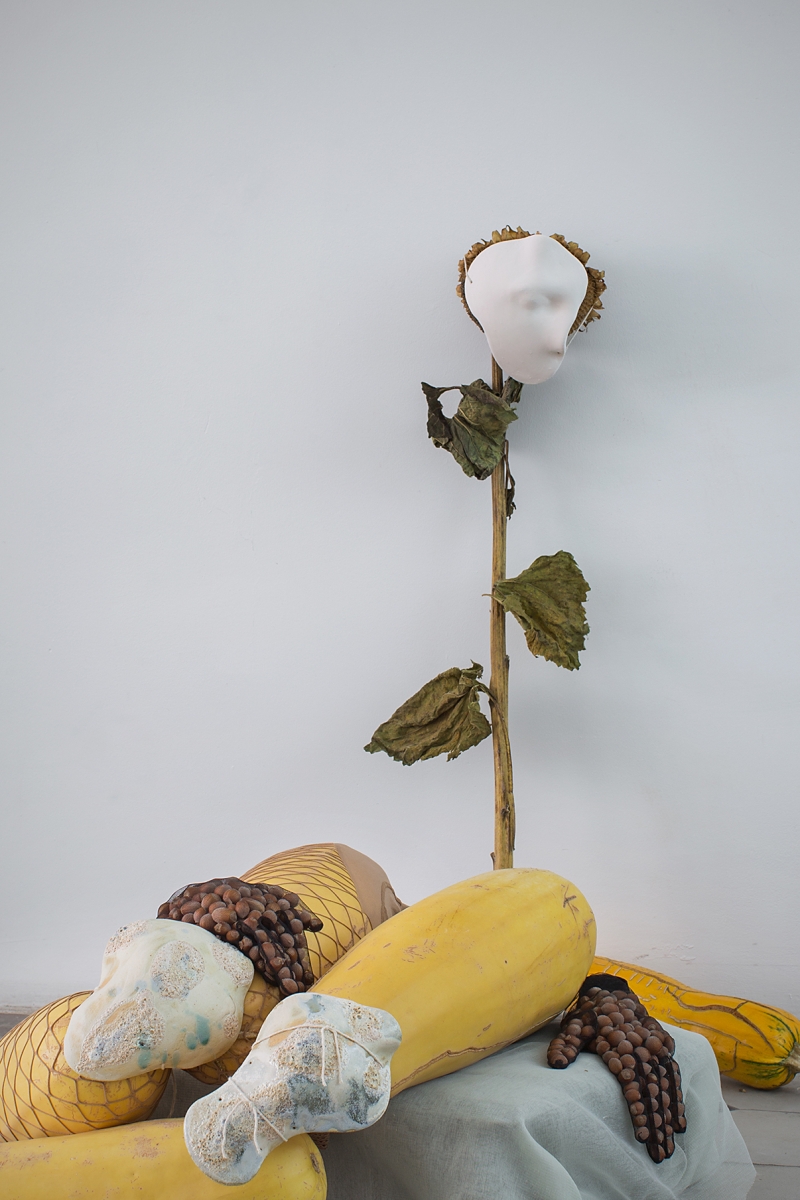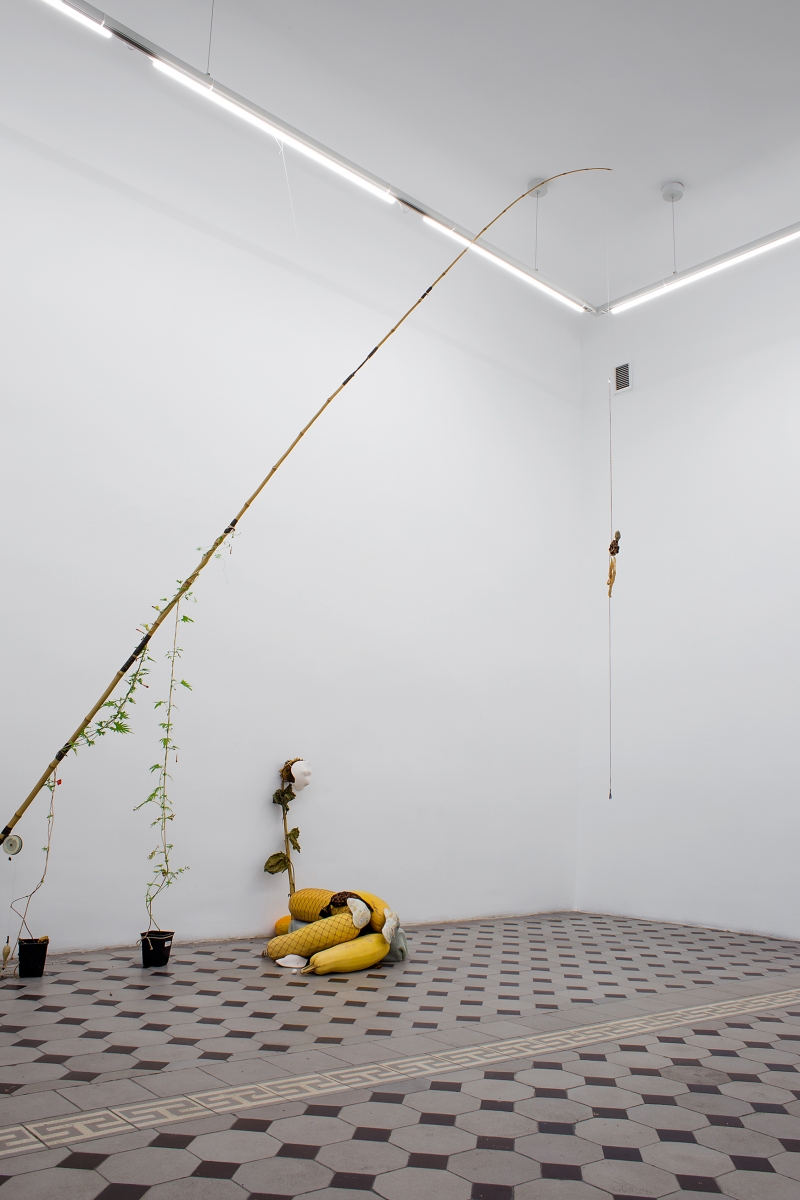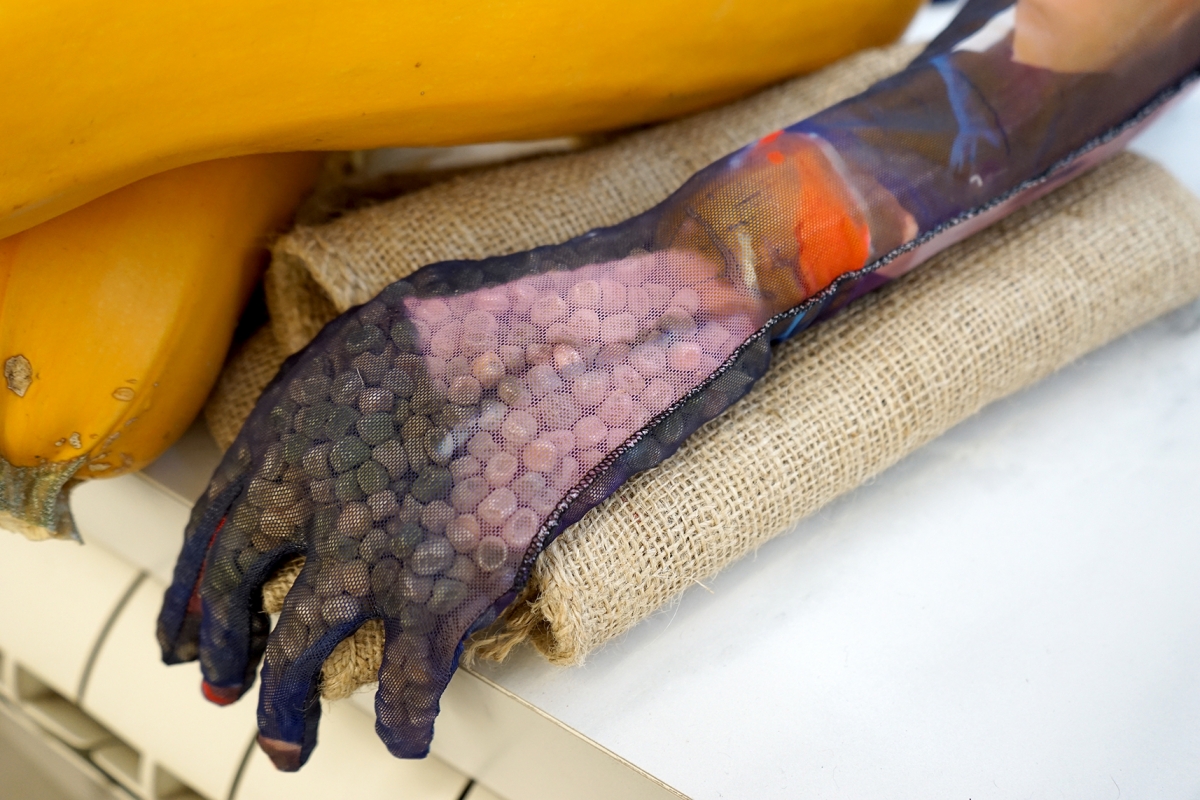“I have the feeling that now is the right time to flounder about by the river, struggle in brushwood, lay one’s body into the riverbed, swim by cattails, water lilies, pondweed, on one’s back with ears under water, to listen to the thundering of mud. While fishing in the depths of a quiet river, I am pulling out endless tufts of grass, old boots, shinbones, hollow thoughts, confusing emotions. Uncontrollable proliferation takes place on the riverbanks – the blood-colored Himalayan balsam, bindweed and hops have turned the riverbanks of the River Jägala into a dense brushwood. The toxic substances coming from Kehra paper mill are drifting downstream, changing the river, its life and flora. Why do I have the feeling that some kind of a whole is expressing itself through this damn brushwood – something that is much more than just alkaline residue? That something or somebody is also defining and characterising the new environment. An active character that is manifesting itself through me, while surrounding me and blurring my boundaries. A nightshade, a henbane, an Atropa Belladonna are budding from my chest.”
Writer Daisy Hildyard has said that we have another body that is as personal and material as the physical body we are aware of. This other body is also a version of ourselves – it extends outside from us, accompanies us on our flights, floats above the factory, enters someone’s lung, flows in the riverbed and rides in a cargo. It is understandably difficult to keep this in mind that we are always connected to this other body, since we are daily present in our primary body; but the fact is that we actually host both bodies. Why are we not touched enough when they speak about global effect? Why does it seem so nonpersonal? Compared to the smallness of our private lives, this scale is unfathomable and our second body is limitless. A closer look at our body shows that it is also conditional in nature – there is always oxygen and atmosphere in our body, and our body moves in atmosphere, similarly we are connected to water and nutrients. While being permeated by matter that is surrounding us everywhere, we form a certain whole with the toxic substances in natural environment, flourishing grass, our body and everyday commodities.
Mari-Leen Kiipli (b. 1988) creates photographs, videos and installations that mainly focus on the undefinable, cognitive qualities of different spaces and situations. As an attentive observer, wanderer and researcher, Mari-Leen Kiipli has created her own intuitive version of various genres such as nature documentary, sports programme or nature photograph, while opposing to the narration-based imagery. At the same time, Kiipli is intrigued by old myths and stories in contemporary context – for instance, apocalyptic myths or the use and effects of various plants. Through these stories, the artist investigates the relationship between men and nature. Mari-Leen Kiipli has studied photography at the Estonian Academy of Arts and Pallas University of Applied Sciences, she has taken additional courses in Vienna. The artist currently lives and works in Tallinn.
Exhibitions in Draakon gallery are supported by the Cultural Endowment of Estonia, Estonian Ministry of Culture and Liviko Ltd.
Exhibition by Mari-Leen Kiipli
Title: Nanshe Gone Fishing
Open: 16.10.-30.10.2021
Draakon Gallery, Pikk 18, Tallinn.
Mon-Fri 11.00-18.00, Sat 11.00-17.00
Photos by Anna Mari Liivrand and Mari-Leen Kiipli






